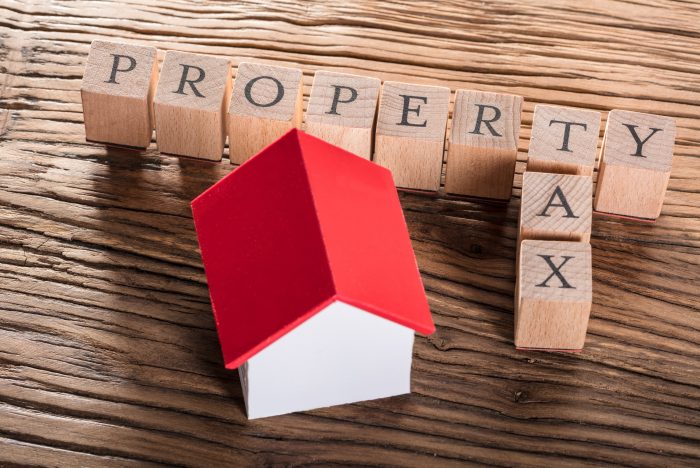 As might be expected, the recent distribution of new tax assessment revaluations has raised question in the minds of property owners about the accuracy of the new assessments. One of the most frequently heard comments is, “This new assessment is too high. I could never sell my property for that amount.”
As might be expected, the recent distribution of new tax assessment revaluations has raised question in the minds of property owners about the accuracy of the new assessments. One of the most frequently heard comments is, “This new assessment is too high. I could never sell my property for that amount.”
At the risk of giving away the plot before the end of the story, the difference between the assessed value for tax purposes and what an owner might believe their property is worth may be a little like comparing apples and oranges. The numbers look like they should be the same, but there may be reasons why the values are different. The following discussion highlights some of the main issues in the different methods of valuation.
Tax Assessment Values
Assessed value is defined as the official appraised value of a property for ad valorem tax (property tax) purposes. State law establishes standards for real property taxation, assessments and appraisals. In North Carolina this legislation has the colorful name of “The Machinery Act.” To determine values for taxation, the law requires that real property be reappraised at least every eight years, but counties have the discretion to conduct the revaluation more frequently. It is my understanding that some counties have chosen to revalue properties as frequently as every four years. Dare County chose to advance the effective date from 2021 to 2020 resulting in a seven-year cycle.
Once properties in the county have been reappraised, the value that has been established generally remains unchanged until the next revaluation is completed. Exceptions to this guideline might include the correction of errors in the original appraisal, changes to land such as subdivision or erosion, additions to existing houses, or the construction of a new house on land that was unimproved at the time the revaluation took place. In these cases, the appraisal would be adjusted to reflect the change, and a new appraised value would be established based on the Schedule of Values, Standards, and Rules adopted for the most recent revaluation.
Real property is assessed at 100% of the market value determined as of January 1st – the effective date of the revaluation. One misconception relative to assessed values is the belief that the valuation methodology used by county appraisers is the same as analytical procedures used by real estate agents to determine probable sale prices or by real estate appraisers to establish market values for loan purposes. In reality, the county’s methods are somewhat similar, but not identical. Without getting into the details, the county appraisers use a broad-based approach that includes a construction cost study, a depreciation study, and a land analysis which are primary components of the mass appraisal process. As part of their research, they conduct a detailed neighborhood-by-neighborhood sales analysis, and in the past, they sometimes physically made two visits to each property. For this revaluation, much of the property review was conducted from the desktop using 3-D oblique imagery and other specialized software supplemented by site visits as needed. In addition, while real estate brokers and appraisers usually evaluate a limited number of properties in relation to the home or lot being analyzed, in the revaluation process the county is evaluating approximately 43,000 properties including vacant lots, houses, condominiums and commercial parcels.
One observation that needs to be made is that whether we are discussing a comparative market analysis or an assessment, the stated value is only valid for a very short period of time after the valuation is completed. For example, if the county appraisal for the 2020 revaluation was actually completed during 2019, it would not be reasonable to expect that the assessed value for tax purposes necessarily equals to the current value of the property in February of this year when the revaluations were mailed to property owners. Market conditions are almost always in a state of change.
If a property owner chooses to question their new valuation, there is an appeal process. Property assessments may be appealed by mail, online or in person. Instructions for appealing are described at the bottom of the 2020 Notice of Assessed Value that property owners received and on the reverse side of the form.
I mentioned earlier that the most frequent comment that we hear about the new assessed values from property owners is, “I can’t sell my property for this amount” When I asked the county appraisal department about this question, the response that I received was, “That is the whole point of the appeal process. A lot of assumptions are made in the determination of the revaluation that may need to have a second look. Information from a property owner may well be needed if an adjustment in the assessed value appears warranted.” In this regard, I have found the folks in the Dare County Assessor’s Office to be both helpful and informative.
One other point needs to be made concerning the revaluation process, and that leads us to the observation that in North Carolina, the revaluation is supposed to be “revenue neutral”. In its simplest form, this means that the revenue brought in by property taxes is a reappraisal year should be approximately the same as if the reappraisal had not taken place. According to Willo Kelly, CEO of the Outer Banks Association of Realtors, “A new ‘revenue neutral tax rate will be established (by the Dare County Board of Commissioners) by July 1. We should know much sooner what the rate will be. In the last revaluation, some land values or home structure values went down; some went up slightly; and, some went up significantly. For those who saw a significant increase, they did see an increase in their total tax bill but not to the extent of applying the current tax rate to the newly valued amount.”
Comparative Market Analysis
Real estate brokers are often asked to assist buyers, sellers, and others in determining the probable sales prices of parcels of real property. This type of analysis is called a comparative market analysis or a broker price opinion. A broker price opinion is essentially a comparative market analysis if it is based on recent sales of comparable properties.
North Carolina law defines a comparative market analysis as an analysis of sales of similar recently sold properties, performed by a real estate broker, to get an indication of the probable sale price of a particular property. In reality, when real estate brokers perform analyses to estimate the probable sale prices of properties, they may also take into consideration the prices of similar properties that are for sale, under contract, or recently expired, as well as market trends and construction costs.
While a fee can be charged by a broker for a comparative market analysis, in most instances, there is usually no charge for current or prospective clients. It is important to note that comparative market analyses may not be performed for lending purposes. A formal appraisal is required for lending situations.
Comparative market analyses are typically performed by real estate brokers to help sellers establish competitive listing prices for properties that they are selling and to provide guidance for buyers in their negotiations for the purchase of properties. Homeowners may also turn to their real estate broker when they are checking to see if their insurance coverage reflects current market values and to determine how assessed values compare with probable sale prices.
Regardless of the valuations that result from a comparative market analysis or the county revaluation process, in the end it is the agreement between the buyer and the seller that ultimately determines the value of any given property at a particular point in time. The various analytical approaches do a good job of putting property values in the ballpark, but the buyer and seller are the decision makers who truly establish fair market value.
—————————————————————————————————————————————-
Questions, comments or suggestions for future articles may be sent to Tom Hranicka at P. O. Box 280, Avon, NC 27915, or e-mail to hranicka@hatterasisland.com.
Copyright©2020 Tom & Louise Hranicka. All rights reserved.




